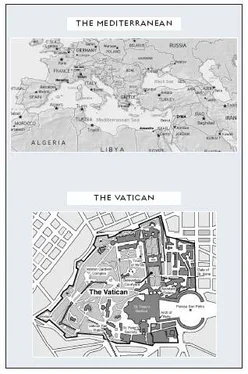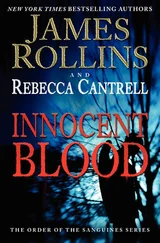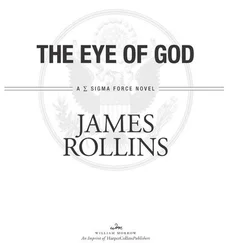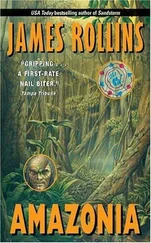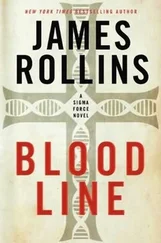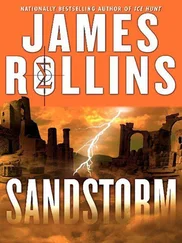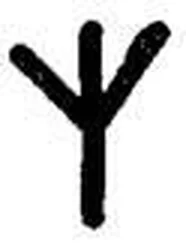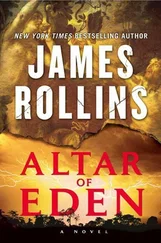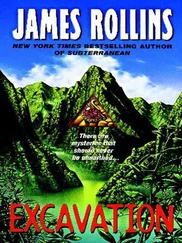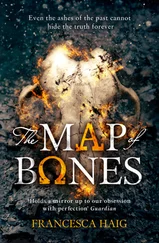Next, he switched a dial so it pointed to the slot with the silty sample. He pressed the green button. “Here is the breakdown of the pulverized bone.”
The graph on the screen cleared and refreshed with the new data.
It looked identical.
“It hasn’t changed,” Rachel said.
With his brow pinched, Gray repeated the test, even taking out the tube and shaking it up. The result was the same each time. A flat line.
“It’s still reading like distilled water,” Kat said.
“It shouldn’t,” Monk said. “Even if the old magi had osteoporosis, the calcium in the bone should be spiking through the roof. Not to mention carbon and a handful of other elements.”
Gray nodded, conceding. “Kat, do you have some of that cyanide solution?”
She swung to her pack, fished through it, and came up with a tiny vial.
Gray soaked a cotton-tipped swab, then pinched the bone between his gloved fingers. He rubbed the wet swab across the bone, pressing firmly, rubbing as if he were polishing silver.
But it was not silver.
Where he rubbed, the brownish-yellow bone turned a rich gold.
Gray glanced up at the group. “This isn’t bone.”
Rachel could not keep the awe and shock from her voice. “It’s solid gold.”
5:12 P.M.
GRAY SPENT half the train trip disproving Rachel’s statement. There was more than just gold in these bones. Also it wasn’t heavy metallic gold, but that strange gold glass again. He attempted to backward engineer the exact composition.
While he worked, he also grappled another problem. Milan. He went over and over again the events at the basilica. He had walked his team into a trap. He could forgive last night’s ambush up in Germany. They had been caught with their pants down. No one could have anticipated such a savage attack at the cathedral in Cologne.
But the close call in Milan could not be so easily dismissed. They had gone into the basilica prepared — but still came close to losing everything, including their lives.
So where did the fault lie?
Gray knew the answer. He had fucked up. He should never have stopped at Lake Como. He should not have listened to Kat’s words of caution and wasted so much time canvassing the basilica, exposing themselves, giving the Court time to spot them and prepare a trap.
Kat was not to blame. Caution was part and parcel of intelligence work. But fieldwork also required swift and certain action, not hesitation.
Especially in its leader.
Up until now, Gray had been going by the book, staying overly cautious, being the leader that was expected of him. But maybe that was the mistake. Hesitation and second-guessing were not Pierce family traits. Not in the father, not in the son. But where was the line between caution and foolhardiness? Could he ever achieve that balance?
Success on this mission — and possibly their lives — would depend on it.
Finished with his analysis, Gray leaned back. He had blistered his thumb, and the cabin reeked of methyl alcohol. “It’s not pure gold,” he concluded.
The others glanced to him. Two were working, two drowsing.
“The fake bone is a mixture of elements across the platinum group,” Gray explained. “Whoever crafted this, they mixed a powdery amalgam of various transitional metals and melted it down to glass. As it cooled, they molded the glass and roughed up the surfaces to a chalky complexion, making it appear like bone.”
Gray began putting away his tools. “It’s predominantly composed of gold, but there’s also a large percentage of platinum and smaller amounts of iridium and rhodium, even osmium and palladium.”
“A regular potpourri,” Monk said with a yawn.
“But a potpourri whose exact recipe may be forever unknown,” Gray said, frowning at the abused piece of bone. He had preserved three-quarters of the artifact untouched and put the remaining quarter through the battery of tests. “With the m-state powder’s stubborn lack of reactivity, I don’t think any analyzing equipment could tell you the exact ratio of metals. Even testing alters the ratio in the sample.”
“Like the Heisenberg Uncertainty Principle,” Kat said, feet up on the opposite bench, her laptop on her thighs. She tapped as she spoke. “Even the act of looking changes the reality of what’s being observed.”
“So if it can’t be completely tested—” Monk’s words were cut off by another jaw-popping yawn.
Gray patted Monk on the shoulder. “We’ll be in Rome in another hour. Why don’t you catch some sleep in the next room?”
“I’m fine,” he said, stifling another yawn.
“That’s an order.”
Monk stood with a long stretch. “Well, if it’s an order…” He rubbed his eyes and headed out the door.
But he paused in the doorway. “You know,” he said bleary-eyed, “maybe they had it all wrong. Maybe history misinterpreted the words the Magi’s bones . Rather than referring to the skeleton of those guys, maybe it meant the bones were made by the Magi. Like it was their property. The Magi’s bones.”
Everyone stared at him.
Under the combined scrutiny, Monk shrugged and half fell out the door. “Hell, what do I know? I can hardly think straight.” The door closed.
“Your teammate might not be so far off base,” Vigor said as silence settled around the cabin.
Rachel stirred. Gray glanced up. Until the recent exchange, Rachel had been leaning against her uncle and had napped for a short while. Gray had watched her breathing from the corner of his eye. In slumber, all hard edges softened in the woman. She seemed much younger.
She stretched one arm in the air. “What do you mean?”
Vigor worked on Monk’s laptop. Like Kat, he was connected to the DSL line built into the new train’s first-class cabins. They were searching for more information. Kat concentrated on the science behind the white gold, while Vigor searched for more history connecting the Magi to this amalgam.
The monsignor’s eyes remained on his screen. “Somebody forged those fake bones. Somebody with a skill barely reproducible today. But who did it? And why hide them in the heart of a Catholic cathedral?”
“Could it be someone connected to the Dragon Court?” Rachel asked. “Their group traces back to the Middle Ages.”
“Or someone within the Church itself?” Kat said.
“No,” Vigor said firmly. “I think there is a third group involved here. A brotherhood that’s existed before either group.”
“How can you be certain?” Gray asked.
“In 1982, some of the Magi burial cloths were tested. They dated to the second century. Well before the Dragon Court was founded. Before even Queen Helena, mother of Constantine, discovered the bones somewhere in the East.”
“And no one tested the bones?”
Vigor glanced to Gray. “The Church forbade it.”
“Why?”
“It takes a special papal dispensation to allow bones to be tested, especially relics. And the relics of the Magi would require extraordinary dispensation.”
Rachel explained, “The Church doesn’t want its most precious treasures to be ruled fake.”
Vigor frowned at Rachel. “The Church places much weight on faith. The world certainly could use more of it.”
She shrugged, closed her eyes, and settled back down.
“So if not the Church or the Court, who forged the bones?” Gray asked.
“I think your friend Monk was correct. I think an ancient fraternity of mages fabricated them. A group that may predate Christianity, possibly going back to Egyptian times.”
“Egyptians?”
Vigor clicked the mouse on his laptop, bringing up a file. “Listen to this. In 1450 B.C., Pharaoh Tuthmosis III united his best master craftsmen into a thirty-nine-member group called the Great White Brother-hood — named from their study of a mysterious white powder. The powder was described as forged from gold, but shaped into pyramidal cakes, called ‘white bread.’ The cakes are depicted at the temple of Karnak as tiny pyramids, sometimes with rays of light radiating out.”
Читать дальше
